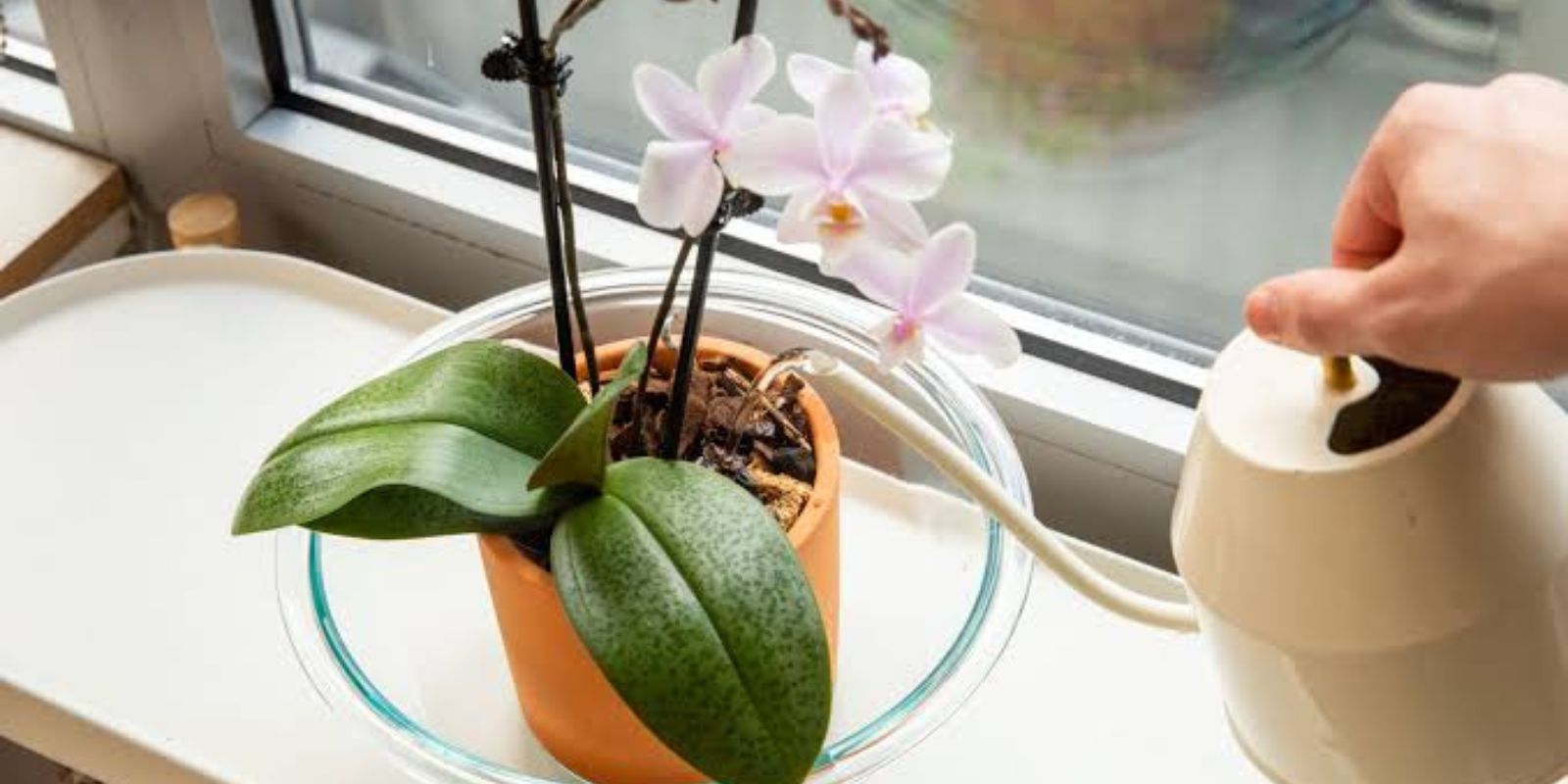Orchids are a favorite among houseplant enthusiasts, admired for their elegant blooms and exotic appeal. However, these delicate plants often leave gardeners puzzled when it comes to watering. Too much water can lead to root rot, while too little can cause dehydration and stunt their growth. To help you master the art of watering orchids, this guide provides all the essential tips and techniques to ensure your orchids stay healthy, vibrant, and blooming throughout the year.
Understanding Your Orchid’s Watering Needs
Watering orchids isn’t a one-size-fits-all task. Different types of orchids, potting mediums, and environmental factors influence their hydration requirements. Here’s what you need to know:
- Know Your Orchid Species:
Common orchid varieties like Phalaenopsis, Dendrobium, and Cattleya have slightly different water needs. Phalaenopsis, for example, prefers consistent moisture but doesn’t tolerate soggy roots. - The Role of Potting Medium:
Orchids are often potted in bark, sphagnum moss, or a mix of materials. Bark drains quickly and retains less moisture, requiring more frequent watering. Moss holds more water, so you’ll need to water less often. - Environmental Factors:
Humidity, temperature, and light affect how quickly your orchid dries out. Orchids in dry climates or warm, sunny spots will need water more frequently than those in humid or shaded areas.
How to Tell If Your Orchid Needs Water
Watering on a strict schedule isn’t ideal for orchids. Instead, learn to read the signs:
- The Wooden Stick Test:
Insert a wooden skewer or toothpick into the potting medium. If it comes out moist, your orchid doesn’t need water yet. - Finger Check:
Gently press your finger into the potting medium. If it feels dry to the touch, it’s time to water. - Observe the Roots:
Healthy orchid roots are plump and green when hydrated. If they appear silvery or gray, your orchid needs water.
How Often Should You Water Orchids?
The frequency of watering depends on the season and environmental conditions:
- In Summer: Orchids typically require watering once a week as they lose moisture more quickly in warmer weather.
- In Winter: Reduce watering to every two weeks as cooler temperatures slow down evaporation and the plant’s growth.
How to Water Orchids Properly
Proper watering techniques are crucial to prevent overwatering and ensure the health of your orchid. Follow these methods:
- Avoid Wetting the Leaves:
Wet leaves can lead to fungal infections and rot. Focus on watering the roots and avoid splashing the foliage. - Water from Above:
- Gently pour water over the potting medium until it’s evenly moist.
- Allow excess water to drain completely. Never let your orchid sit in standing water, as this can cause root rot.
- The Soaking Method:
- Place the orchid pot in a container of water, submerging the roots for 15–30 minutes.
- Remove the pot and let it drain thoroughly. This method ensures the roots absorb enough water without oversaturating the medium.
What Type of Water Should You Use?
The quality of water can significantly impact your orchid’s health. Here are the best options:
- Rainwater:
Orchids thrive on rainwater, which is free from chemicals and naturally balanced for their needs. - Filtered or Distilled Water:
These options are ideal if rainwater isn’t available, as they lack harmful salts and impurities found in tap water. - Tap Water (with Adjustments):
If you must use tap water, let it sit overnight to allow chlorine to dissipate, or acidify it by adding a few drops of lemon juice. - Boiled and Settled Water:
Boiling water removes some impurities, and letting it cool ensures it’s safe for your orchid.
When Orchids Need Extra Water
Certain conditions require more frequent watering:
- Tight Pots:
Orchids in compact containers dry out faster due to limited soil volume. Monitor these plants closely and water more often. - During Active Growth:
When orchids are growing new leaves, roots, or flower spikes, they consume more water. Adjust your watering schedule accordingly. - Morning Watering:
Water your orchids early in the day to ensure the roots dry before nightfall. This prevents fungal growth and keeps your plant healthy.
Common Mistakes to Avoid
- Overwatering:
Excessive watering is the most common cause of orchid failure. Always let the potting medium dry out slightly between waterings. - Using Hard Water:
Water with high mineral content can leave deposits on your orchid’s roots and leaves, harming the plant over time. - Inconsistent Watering:
Erratic watering can stress your orchid and disrupt its growth cycle. Maintain a consistent schedule based on your plant’s needs.
Additional Tips for Thriving Orchids
- Use a Humidity Tray:
Orchids love humidity. Place a shallow tray of water with pebbles under your orchid pot to create a moist microclimate. - Mist Sparingly:
If your environment is very dry, lightly mist the air around your orchid. Avoid misting the leaves or flowers directly. - Fertilize Wisely:
Use a balanced orchid fertilizer at half strength during the growing season to support healthy growth and blooms.
Conclusion
Watering orchids may seem challenging, but with the right techniques and a bit of observation, it becomes second nature. By following the steps outlined in this guide, you can provide your orchids with the ideal hydration they need to thrive and bloom repeatedly.
Remember, consistency and attention to your plant’s unique needs are key to successful orchid care. With these tips, your orchids will reward you with stunning, long-lasting flowers and vibrant growth.
🌸 Ready to put these tips into practice? Let us know your favorite orchid care hacks in the comments below! 🌱 #OrchidCare #HouseplantTips #GardeningMadeEasy

